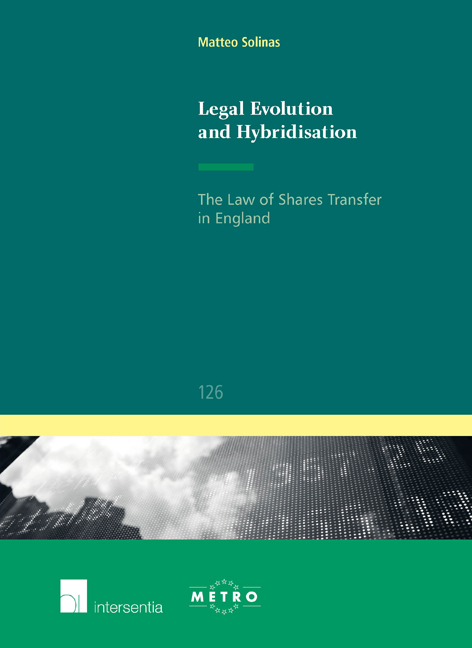Summary
These conclusions review the fundamental themes discussed in the preceding Parts and draws together the findings of the investigation.
Part I dealt with the conceptual framework of this study. It examined the comparative debate on the pattern, meaning and significance of the circulation of legal paradigms across national frontiers. The discussion centred on whether it was appropriate to describe the movement of law from one country to another by using the metaphor of a ‘legal transplant’. Broadly, two approaches to this question were explored. The first one, relying on historical evidence, suggested that the evolution of law is largely autonomous from society, as it primarily consists of a function of rules being imported from another legal system driven by legal elites. The second approach was sceptical about the role of history and of comparative law as tools to detect the pattern and the drivers of legal change. It pointed out that the development of law does not take place through borrowing because law mirrors, and is responsive to, situated linguistic, cultural and moral national frameworks. The two approaches are irreconcilable with each other. And both views were found to be misleading, as they overlook the relationship between legal comparison and sociology of law and over-simplify the concepts of language and culture, respectively. To address these shortcomings an original interpretation of the pattern of legal change was offered.
The underlying theme put forward was that the practice of borrowing is not exclusively a legal phenomenon; it reflects a common trend of social life, a mechanism of culture diffusion. It applies to law because law is itself a form of culture. Building on this understanding, Part I proposed a new perspective for considering the significance of legal borrowing and for explaining legal evolution. The main argument was that the movement of legal paradigms from one country to another rarely consists of a mere transplantation of rules. Instead, it generally involves a complex and gradual process of interaction between legal and social consciousness, between imported models and indigenous traditions. From that perspective, specific attention was paid to recent studies on acculturation, colonialism and contact situations in general. The focus of the analysis was on the notion of ‘hybridity’.
- Type
- Chapter
- Information
- Legal Evolution and Hybridisation , pp. 217 - 224Publisher: IntersentiaPrint publication year: 2014



